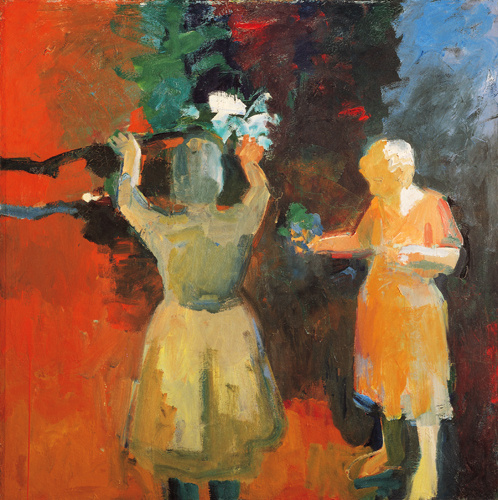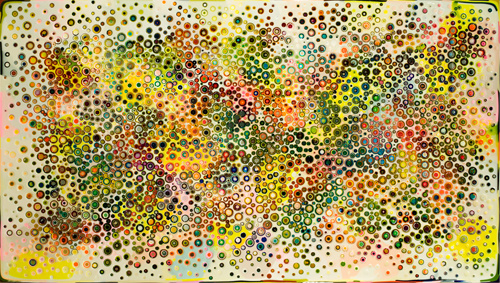From the color of our cars to the colors we choose to wear, one thing is certain: our preference for particular colors is a personal one. Many of us have an opinion about color, whether it involves selecting a range of colors for the walls in our homes or deciding on the appropriate color scheme for a company logo. Treatises have been written on the psychology and spirituality of color, and theories abound on how colors are named or created. For artists, the choices to use color are no different than the choices we make about color in our daily lives. Color may be a vehicle for pure pleasure; for shaping the liveliness of a composition; or for invoking a particular emotional tone or volume.
Local Color, drawn from the Museum’s permanent collection, explores the primacy of color in a range of works, from Alexander Calder’s whimsical mobiles to Elmer Bischoff’s luscious, light-filled canvases to David Levinthal’s slick, color-saturated photographs of Barbie dolls. Also featured are works by artists who consider the quiet, meditative nuances of black and white. This exhibition encourages viewers to look at color as content. How does color play into your intuitive experience of a work of art? What are some of the ways artists use color as the subject of their work?
In Barbara Takenaga’s hypnotic painting Wheel (SJ) (2011), abstract patterns of circles, spirals, and pinwheels may recall star-filled galaxies or psychedelic visions. Takenaga employed a modest palette of colors (blue, gray, and black) to intense effect. Sam Tchakalian took a different approach in his painting Hole in One (ca. 1990), in which his limited selection of blue-green, gray, and white colors allude to the glossy, sunlit surface of a lake or pool. Tchakalian’s watery reference produces a sensation of respite and calm.
This exhibition will also include work by Josef Albers, Fletcher Benton, Mary Corse, Tony DeLap, Sam Francis, Sonia Gechtoff, James Hayward, Paul Jenkins, Amy Kaufman, Markus Linnenbrink, Nathan Oliveira, Fred Spratt, Raimonds Staprans, Amy Trachtenberg, and Patrick Wilson, among others.
Local Color Playlist
Click here to listen or add to our Local Color playlist on Spotify. (Must have Spotify account).
Sponsors
- Doris and Alan Burgess



